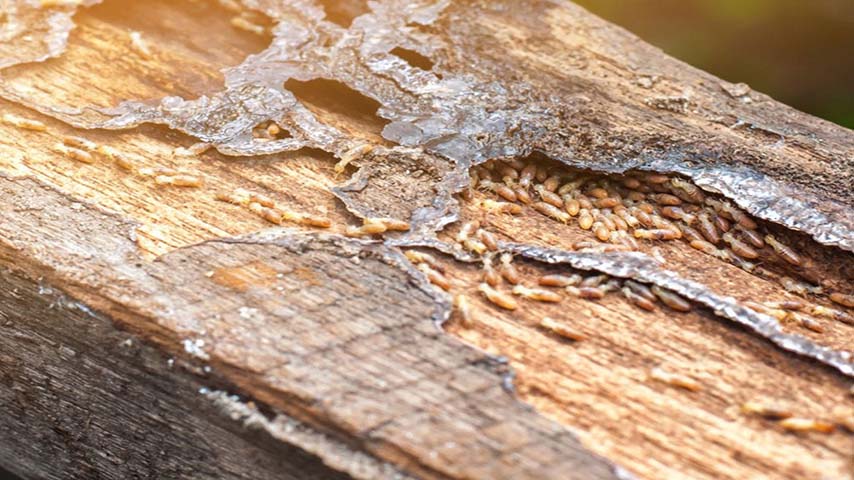Termite damage is a serious issue that can lead to significant structural problems in homes and buildings. Termites are often called “silent destroyers” because they can cause extensive damage before homeowners even realize there is a problem. If you’re dealing with termite damage, hiring a skilled termite damage repair contractor is crucial. This guide will cover what a termite damage repair contractor does, why you need one, how to choose the right contractor, and what to expect during the repair process.
What Does a Termite Damage Repair Contractor Do?
A termite damage repair contractor specializes in fixing and restoring structures that have been compromised by termite infestations. Their role involves several key tasks:
Assessment and Inspection
Before any repair work begins, a contractor will conduct a thorough inspection of the property. This includes assessing the extent of the damage caused by termites. The inspection will typically involve:
Visual Inspection: Checking for visible signs of termite activity such as mud tubes, wood damage, and discarded wings.
Structural Assessment: Evaluating the structural integrity of the affected areas. This may involve checking beams, joists, and other wooden components for signs of deterioration.
Moisture Analysis: Termites are attracted to moisture, so contractors will check for any leaks or water damage that could be contributing to the infestation.
Damage Repair and Restoration
Once the assessment is complete, the contractor will create a detailed plan for repairs. This plan may include:
Replacing Damaged Wood: Any wood that is too damaged will need to be replaced. This includes structural elements like beams and joists, as well as cosmetic features like trim and moldings.
Reinforcing Structures: If the structural integrity of the building has been compromised, the contractor may need to reinforce affected areas to ensure safety and stability.
Restoring Aesthetic Features: In addition to structural repairs, contractors will also work on restoring the appearance of the damaged areas, which may involve painting and finishing work.
Prevention Measures
To prevent future infestations, the contractor will also implement measures to deter termites. This can include:
Moisture Control: Addressing any sources of moisture that may attract termites, such as fixing leaks or improving ventilation.
Barrier Treatments: Applying chemical treatments or physical barriers to prevent termites from entering the property.
Regular Inspections: Recommending ongoing inspections to catch any potential issues early.
Why You Need a Termite Damage Repair Contractor
Hiring a professional termite damage repair contractor is essential for several reasons:
Expertise and Experience
Termite damage repair contractors have specialized knowledge and experience in dealing with termite issues. They understand the behavior of termites, the extent of the damage they can cause, and the best methods for repair and prevention.
Comprehensive Repairs
Repairing termite damage requires more than just replacing damaged wood. Contractors have the skills and tools necessary to address all aspects of the repair process, from structural reinforcement to aesthetic restoration.
Effective Prevention
A contractor can implement effective measures to prevent future termite infestations. This includes not only treating the immediate problem but also addressing conditions that could attract termites in the future.
Safety and Compliance
Termite damage repair often involves working with structural components of the building. A professional contractor ensures that all repairs are done safely and in compliance with local building codes and regulations.
How to Choose the Right Termite Damage Repair Contractor
Selecting the right contractor for termite damage repair is crucial to ensuring the quality and effectiveness of the work. Here are some tips for choosing a reliable contractor:
Check Qualifications and Certifications
Ensure the contractor has the necessary qualifications and certifications. Look for credentials such as:
Pest Control License: This ensures the contractor is licensed to handle pest control and termite treatments.
Certifications from Professional Organizations: Membership in organizations like the National Pest Management Association (NPMA) or local pest control associations indicates a commitment to industry standards.
Review Experience and Reputation
Experience is important when it comes to termite damage repair. Look for contractors with a proven track record of successfully handling similar projects. Check online reviews, ask for references, and consult with previous clients if possible.
Get Multiple Quotes
Obtain quotes from several contractors to compare pricing and services. Be wary of unusually low quotes, as they may indicate subpar work or hidden costs. Make sure the quotes are detailed and include a breakdown of all costs.
Ask About Warranty and Follow-Up Services
A reputable contractor should offer a warranty on their work. This provides you with peace of mind that any issues arising after the repair will be addressed. Additionally, inquire about follow-up services or regular inspections to monitor for any new termite activity.
Verify Insurance Coverage
Ensure the contractor has adequate insurance coverage, including liability insurance and workers’ compensation. This protects you in case of any accidents or damage that may occur during the repair process.
What to Expect During the Repair Process
Understanding what to expect during the termite damage repair process can help you prepare and ensure the work is done efficiently. Here’s a general overview of the steps involved:
Preparation
Before the repair work begins, the contractor will prepare the site. This may involve moving furniture, covering floors, and setting up protective measures to minimize dust and debris.
Repair Work
The contractor will carry out the necessary repairs according to the plan developed during the assessment phase. This may include:
Removing and Replacing Damaged Wood: Removing affected wood and installing new, treated wood.
Reinforcing Structures: Adding supports or reinforcements to ensure the structural integrity of the building.
Restoring Finishes: Repairing or replacing trim, paint, and other cosmetic features.
Cleanup
After the repairs are complete, the contractor will clean up the work area. This includes removing debris, dust, and any protective coverings used during the repair process.
Final Inspection
A final inspection will be conducted to ensure that all repairs have been completed to your satisfaction and that no additional issues have arisen.
Prevention Measures
The contractor will implement any recommended prevention measures, such as moisture control and barrier treatments, to help protect your property from future termite infestations.
Conclusion
Dealing with termite damage can be a daunting task, but hiring a qualified termite damage repair contractor is crucial to restoring your property and preventing future problems. By understanding what these contractors do, why their expertise is essential, and how to choose the right one, you can ensure that your termite damage is addressed effectively and efficiently. Remember to prioritize qualifications, experience, and a solid reputation when selecting a contractor, and you’ll be well on your way to a successful repair process.




